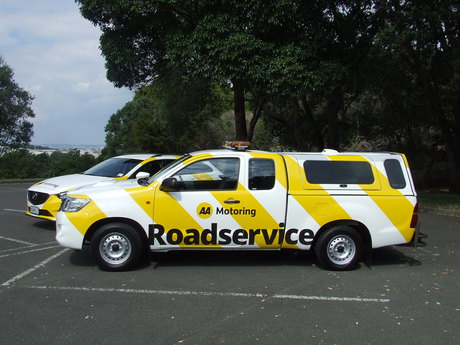Driving service efficiencies

Since 2001, ECONZ has been the driving power behind New Zealand’s favourite roadside breakdown service, The Automobile Association, helping rescue an average 1200 stranded drivers per day.
ECONZ was commissioned to design and build a computer system that would allow AA to get to customers quickly and to keep them informed. The resulting Computer Aided Receipt and Dispatch (CARD) system provides an end-to-end solution - from the interactive voice response (IVR) to the call centre, optimised job scheduling and dispatch to the road service application (the field worker’s job management system).
The system manages all breakdown jobs from the call centre operators through to the service officer who arrives at the roadside. Mini laptops in the vehicles are electronically integrated so all the information is consistent and ready to hand. If the issue is resolved it is directly recorded and if another resource is required, eg, a tow truck, then the system manages that process as well.

The system’s Road Service application dispatches jobs to roadside operatives in their vehicles then navigates them to the job. Operatives can directly schedule jobs for other services within the same application and interact with the office in real time. This means fewer calls and fewer miscommunications, increasing operational efficiencies and, ultimately, cost savings. This, in turn, keeps member fees to a minimum.
The ECONZ system doesn’t just ‘handshake’ information from one point to another, as it is intelligent software that actively optimises scheduling. It calculates defined parameters including: the distance between a job and a service provider, penalty costs for crossing work areas, work area density, job age and service provider available state time. It then makes recommendations on service provider suitability for each job, which delivers faster, more efficient services for members, as well as complete transparency of the service provision process.
In 2013, ECONZ integrated mobile apps and web-based logging, which allows members to log a callout directly from a mobile phone or via the internet, in addition to the existing call centre facility. Increased automation through ongoing software development has given members improved customer service and allowed AA to more than meet KPIs. One such measure was length of time customers spend on a call, which has seen an improvement from 10 or 15 minutes down to fewer than five.
The use of Electronic Data Integration (EDI) means that every part of the system is fully integrated and accessible in real time. Any field in the system can be tracked and KPIs developed around what is required. 1200 callouts a day generates a lot of data, but the system provides an accurate picture of current performance through monitoring and reporting.
The benefits aren’t limited only to members, as the system makes a big difference to the company internally. Front-end staff can be informed as soon as changes happen, so everyone is abreast of all options available to members. This means that processing is faster and that members know they are getting the most up-to-date information and are delivered the best possible outcome. The level of detail generated allows AA to highlight challenge areas and provides the impetus for new developments and new options for improving the customer experience.
All-electric haulage fleet under mining alliance
A strategic alliance between Newmont and Caterpillar will see the rapid deployment of an...
How to measure ROI of field service management software
Some ROIs are easier to calculate than others. It's important to consider both tangible and...
Preparing the grid for electric vehicles
A new $3.4 million trial will help support growing adoption of electric vehicles across Australia...




